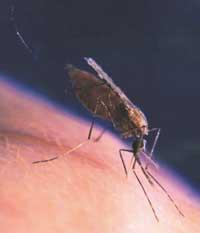Top ten scientific advances in 2002

The scientific journal Science annually compiles a list with the ten most relevant research or findings of the completed year. In the first place in the list of 2002 small RNAs appear. Until recently, scientists considered that the function of RNA was to follow the orders of DNA in the formation of proteins. However, research carried out during 2002 has shown the importance of some small but special parts of RNA in gene expression.
It is followed by particles that emit the Sun, neutrins. In fact, last year, much information was received on the nature and characteristics of neutrinos. Third, we mention the tasks of genomic decoding of various organisms, such as parasite and mosquito, two varieties of rice, mouse and rat that are used in the laboratories.
In addition, the list indicates that microwave radiation fluctuations have been detected from the space background, which has allowed to know more details about the creation and future of the universe. And it has also been worth mentioning the technique that records an image per attosegundo (10-18 seconds). With this they believe that the movement of electrons around the atom can be filmed.

In the sixth place on the list, it is indicated that cells have been found that react to both temperature and flavor. It is curious because it has always been said that the guindilla burns and refresh the peppers. It has now been shown that some cells are capable of capturing both sensations. The seventh position is occupied by a technique appropriate to study structures according to cellular organelles, the tomography of cryoelectrons.
And in the last places appear the optical system capable of overcoming the atmospheric evening, the retina receptors that receive light to adjust the biological clock and the ‘man of Toumaïko’, presumably the oldest hominid.





